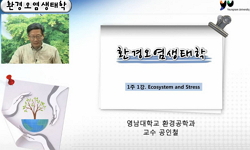Purpose: This study evaluates the impact of car wash operations on surrounding soil properties in Gilgit City. The research focuses on key soil parameters, including pH, electrical conductivity (EC), soil organic matter (SOM), soil organic carbon (SOC...
http://chineseinput.net/에서 pinyin(병음)방식으로 중국어를 변환할 수 있습니다.
변환된 중국어를 복사하여 사용하시면 됩니다.
- 中文 을 입력하시려면 zhongwen을 입력하시고 space를누르시면됩니다.
- 北京 을 입력하시려면 beijing을 입력하시고 space를 누르시면 됩니다.

An Assessment of the Impacts of Car Wash Stations Effluents on Surrounding Soil Properties in Gilgit Baltistan, Pakistan
한글로보기https://www.riss.kr/link?id=A109576104
-
저자
Benish ZAHRA (Eulji University) ; Arisha AMAN (Dept. Environmental Science Karakoram International University) ; Woo-Taeg Kwon (Eulji University)
- 발행기관
- 학술지명
- 권호사항
-
발행연도
2025
-
작성언어
English
- 주제어
-
등재정보
KCI등재
-
자료형태
학술저널
-
수록면
31-41(11쪽)
- DOI식별코드
- 제공처
-
0
상세조회 -
0
다운로드
부가정보
다국어 초록 (Multilingual Abstract)
Purpose: This study evaluates the impact of car wash operations on surrounding soil properties in Gilgit City. The research focuses on key soil parameters, including pH, electrical conductivity (EC), soil organic matter (SOM), soil organic carbon (SOC), and soil texture. Understanding these impacts is crucial for assessing potential soil degradation due to car wash effluents. Research Design, Data, and Methodology: A reconnaissance survey identified three car wash sites: Danyore, Dumiyal, and Nagaral. Soil samples were collected from these locations and analyzed for pH, EC, SOM, SOC, and texture composition. One-way analysis of variance (ANOVA) was conducted to determine mean differences among sites, while Pearson’s correlation coefficient was used to examine relationships between soil properties. Results: Significant variations were observed in soil properties across the study sites. The highest pH was recorded in Danyore (7.7), followed by Dumiyal (7.5) and Nagaral (7.2). EC was highest in Dumiyal (5.1 mS/m), followed by Nagaral (2.9 mS/m) and Danyore (2.3 mS/m). The highest SOM and SOC levels were found in Nagaral (2.6%, 1.5%), followed by Dumiyal (2.5%, 1.4%) and Danyore (1.9%, 1.1%). Soil texture analysis revealed that sand content was highest in Danyore (73.2%), while silt content was highest in Dumiyal (61.2%). Clay content remained constant across all sites. Conclusion: The findings indicate that car wash activities significantly alter soil properties, leading to chemical and physical degradation. Increased EC levels and altered SOM and SOC contents suggest contamination from car wash effluents, which can negatively impact soil health. These results highlight the need for implementing environmentally friendly car wash practices, including wastewater treatment, to mitigate soil degradation and preserve soil quality in urban areas.
동일학술지(권/호) 다른 논문
-
Risk Factors of Fall Occurrence and Frequency Among Elderly South Koreans
- 한국웰빙융합학회
- 김경범
- 2025
- KCI등재
-
Global Trends in Healthcare IT: EMR’s Central Role and Google Trends Insights
- 한국웰빙융합학회
- Eun-Mee Choi
- 2025
- KCI등재
-
- 한국웰빙융합학회
- Hee-Sook HWANG
- 2025
- KCI등재
-
A Study on the Current Status of Microplastic Analysis in the Air Using FT-IR
- 한국웰빙융합학회
- 우승준
- 2025
- KCI등재




 ScienceON
ScienceON






